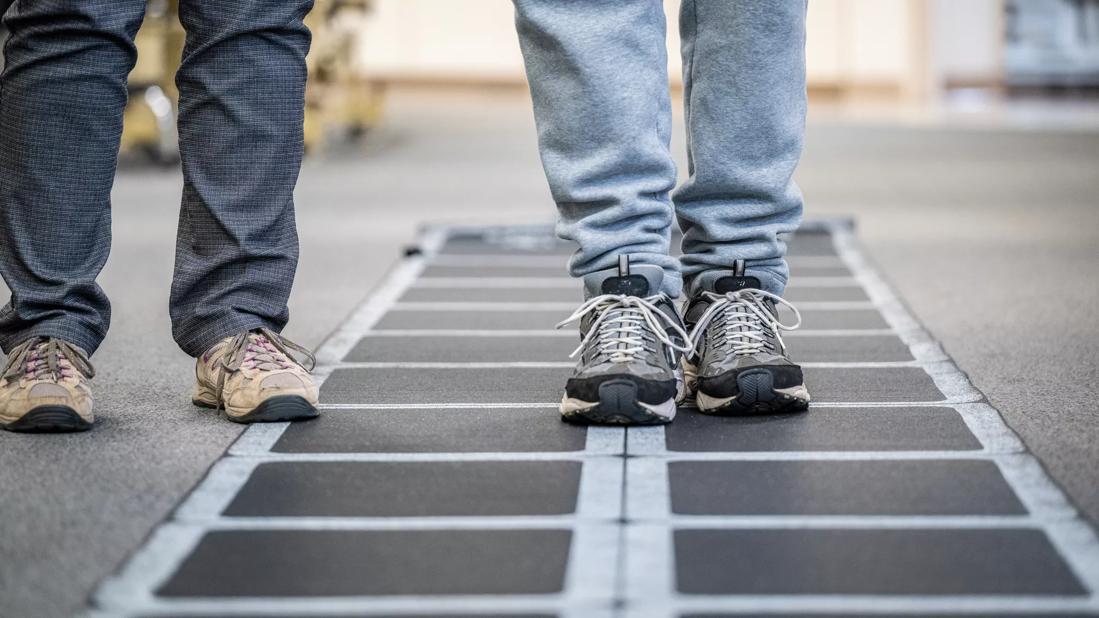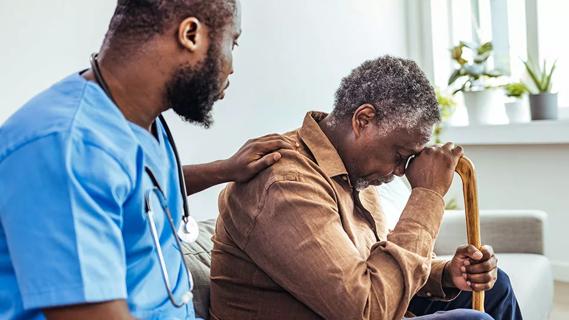Strokes in the left side of the brain are more common and the effects are typically more noticeable

Your cerebral cortex is the largest part of your brain. It’s what houses functions like your voluntary movement, sensation, language, memory, thinking skills, problem-solving abilities, emotional responses and more. Other parts of your brain take care of the more automatic things in your body. Like breathing, heart rhythms and other reflexes.
Advertisement
Cleveland Clinic is a non-profit academic medical center. Advertising on our site helps support our mission. We do not endorse non-Cleveland Clinic products or services. Policy
But it’s your cerebral cortex that — more than any other part of your brain — makes you you.
So, when you have a stroke in your cerebral cortex, it can affect your personality, reasoning, speech and more. In short, a major stroke can seem to rob a person of themselves.
“When someone has a stroke, it’s a serious emergency. But after the immediate danger has passed, the effects of a stroke can range from unnoticeable to debilitating,” says vascular neurologist Shazam Hussain, MD. “The severity of the stroke and where it happens in the brain makes a big difference in your recovery and any lasting effects.”
Strokes are often talked about in terms of happening in the left or right hemisphere of the brain. What are the differences between left- vs. right-brain strokes? What can you expect if you or a loved one had one or the other?
Dr. Hussain explains.
A stroke happens when blood flow is cut off to certain parts of your brain. You can think of a stroke like your brain’s version of a heart attack.
“When parts of your brain don’t get enough blood, the cells in that area become damaged and die,” Dr. Hussain says. “When too many cells die, you can lose abilities that those cells were responsible for.”
Advertisement
The severity of the damage caused by the stroke also plays a big role in any lasting effects you’ll notice.
What’s more, the cells in the left hemisphere of your brain are responsible for certain tasks. Same with the cells on the right side of your brain.
But there’s some overlap. Some shared, undamaged parts, including those on the other side of your brain, may be able to pick up some of the slack.
A healthcare provider, like a neurologist, can see where a stroke has affected your brain through imaging tests, like CT scans or MRI scans.
The left hemisphere of your brain controls most of your communication skills, such as your ability to form coherent sentences and understand what others are saying. It also helps with problem-solving, strategizing and analyzing. And it’s your left hemisphere that controls movement on the right side of your body.
“Strokes that affect the left hemisphere of the brain are often easier to recognize than strokes impacting the right hemisphere,” Dr. Hussain says.
Left hemisphere strokes are also diagnosed more frequently than right hemisphere strokes. Researchers aren’t yet sure whether that’s because they do, in fact, happen more commonly or if right hemisphere strokes are underdiagnosed because the effects can be tougher to spot.
After a stroke in the left side of the brain, people can have trouble with some of the functions that are typically controlled by the left side of the brain.
One common issue is aphasia, or difficulty speaking.
“Stroke survivors frequently have speech and communication problems,” Dr. Hussain shares. “You may notice they have a hard time expressing language or understanding what is being said to them.”
The language center of the brain is in the left hemisphere in right-handed individuals and in 50% of those who are left-handed (15% of the U.S. population). But half of left-handed people have their language center on the right side of the brain. And some individuals can also have language centers on both sides of their brains.
Other common effects of left-hemisphere strokes include things like:
The right hemisphere of the brain controls movement in the left side of your body. It’s also responsible for things like your emotions and imagination. The right hemisphere of your cerebral cortex also helps with spatial orientation — which includes things like a sense of direction or recognizing when things are close to you versus farther away.
Advertisement
Common right-brain stroke effects can include:
A stroke rehabilitation program can help people who’ve experienced a stroke to recover function and adapt to changes in their abilities. Healthcare providers may recommend rehabilitation programs like speech therapy, physical therapy, occupational therapy and cognitive therapy.
Advertisement
Other treatments, like medication and managing chronic conditions, can also play a big role in recovering from a stroke and preventing another one.
“Caring for someone who’s experiencing major changes after a major stroke can be a tough job — physically and emotionally,” Dr. Hussain acknowledges. “Talk openly with a healthcare team about the effects the stroke has had. And make sure to take care of your physical and mental health as well. It’s important.”
Advertisement
Learn more about our editorial process.
Advertisement

Seek immediate medical attention for sudden loss of balance, vision changes, slurring, facial droopiness and limb weakness

Your age, the type of stroke you had, the cause and the location can all impact your recovery

It can be overwhelming, but habit changes help lower your risk of another stroke

Hormonal changes and pregnancy are some factors unique to women

What you eat may protect you from a ‘brain attack’

Know the warning signs + decrease your risk

The short answer from a vascular neurologist

Watch for depression, behavior changes

The best parenting style balances enforcing rules and showing plenty of love

Tips include cutting back on sugar, focusing on exercise and managing stress

It can be harder to let go when you’ve invested time, energy and emotions — but it might be the healthier choice long term